Integrating biodiversity-rich nature into urban areas
Conference FOR URBAN PASSION 12/10/2023 at Liège, Belgium
We live in a time of great change. I don’t need to explain this any further – key words suffice: Climate change, loss of biodiversity, resource scarcity, global population explosion.
This should have consequences for everything we do on a daily basis in our professional activities.
Project design, plans, maintenance of the city, its infrastructure and its buildings: these are not only done with a view to today, but also with a view to at least 100 years from now!
But the strength of the existing and the force of habit and current are enormous. It’s made up of an enormous network of existing things, regulations, habits and points of view, thoughts about what is and what should be. All this has its origins in the past – in the situations of those times.
But we can’t go on as before!
Difficult as it may be, we have to think again about what is useful and forward-looking in changing circumstances, and what needs to be done differently.
One condition is clear: In our professional field, we must contribute to stop climate change and to stop the disappearance of species and, if possible, reverse the trend. In other words, we need to put a stop to the destruction of nature that goes hand in hand with the constant expansion of our cities.
In my opinion, one thing is clear: even with a strategy of intensive densification of the urban housing stock, we won’t be able to avoid continuing to expand urban areas. We won’t be able to stop cities from expanding. In other words, the expansion of the city into nature will continue. Despite our purposes to the contrary.
But in fact, this should never happen. A dead end. Is there a solution?
We should confront the opposite: the expansion of nature into the city. Accept both expansions in the other direction – accepting the demands of the other side!
We need a kind of social contract with nature!

Consider the city itself as a form of nature, and give space to nature in its various forms within the built environment. This is what I call ‘seeing the city as a biotope’, Biotop City, Biotope City. A social contract with nature!
Here are a few key points:
We should see the city integrated into nature’s complex interrelationships. This means: We should no longer see the city as the antithesis of nature, but as one of its manifestations.
This vision is not at all unrealistic or romantic. No, it’s even beneficial in the long term! In our strategies, we’re going to make use of nature’s regenerative forces.
- Green leaves lower temperatures, trap fine particles and purify the air.
- Green leaves provide food for insects, helping to enhance biodiversity.
- In the long term, the renewable material wood could replace part of our consumption of raw materials, thus avoiding their degradation.
It’s a win-win situation!
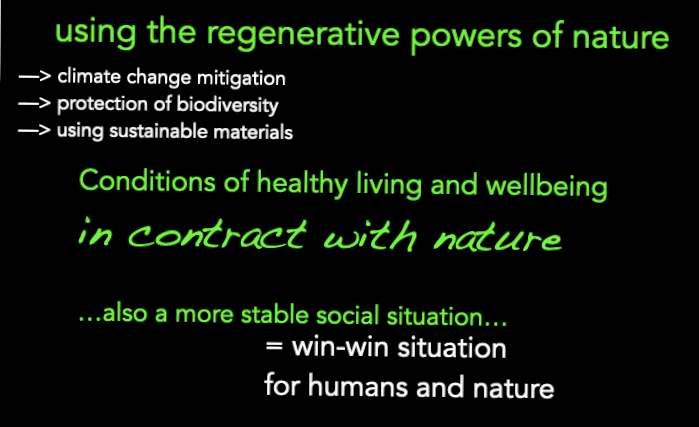
What’s more: the experience of nature, even in the city, contributes to our own relaxation, and contact with nature has a stabilizing effect on a social level: communities are formed around urban gardening, tree planting and even the upkeep of public green spaces.
I’m proposing the RENATURATION of CITIES – not in the low-density form of Ebenzer Howard’s garden city concept of the late 19th century, but in the form of a contemporary garden city: a very dense city that at the same time offers space for nature.
But this requires cohabitation.

The cohabitation of homo sapiens, flora and fauna (I would add: let’s not forget that we actually belong to the category of fauna, we ourselves being a particular species of vertebrate).
There are only three basic principles to this cohabitation:
Build as densely as possible and, despite density, waterproof as little as possible, while making the exterior surface as useful as possible for flora and fauna.
But this doesn’t just mean having as much vegetation as possible.
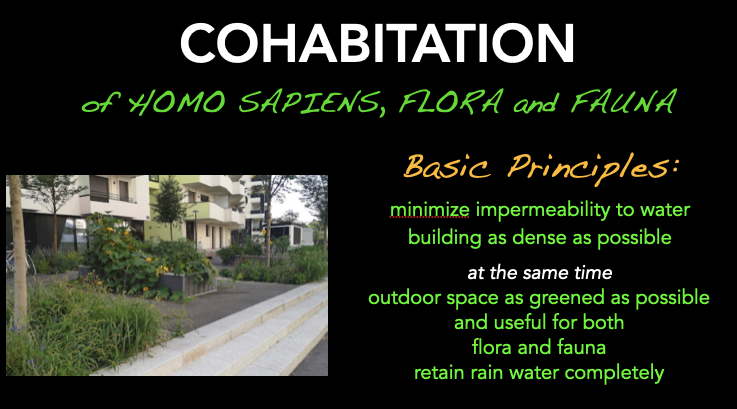
Ever since architects and urban planners first realized that green leaves reduce temperatures and improve air quality, a quasi-mechanical relationship has developed with greenery: green as a temperature-lowering machine.
That’s too narrow a vision! No flora without fauna!
We need to see greenery as the basis for other forms of life – first and foremost, as the basis for insect life. We urgently need insects for pollination. And at the same time, they are the basis of food for birds and small animals. Urban vegetation: don’t just think of it as a temperature-lowering machine – it’s also, and above all, food for insects!

These considerations lead to a long list of built environment requirements, but also to feasible solutions. I have listed the most important ones here. They concern the urban plan itself, then the design, drawing and construction of the buildings, and finally the development of the outdoor spaces, as well as the question of the habitat of insects and animals in the outdoor spaces.
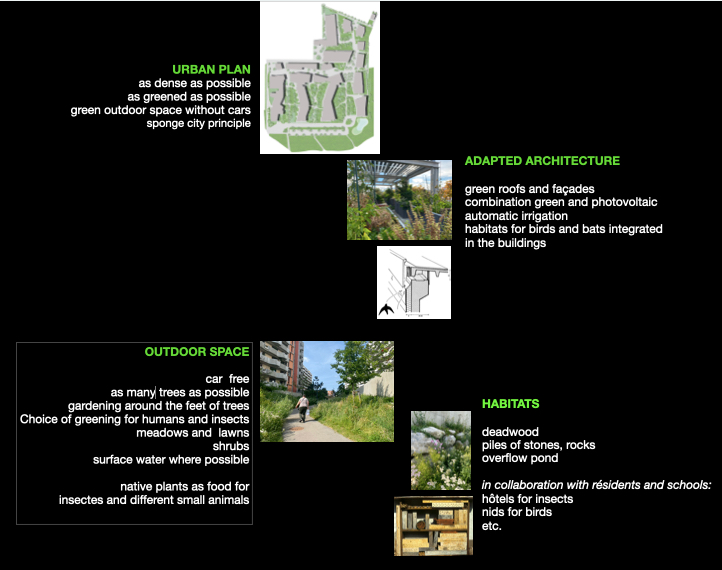
You can legitimately ask the question based on your own practice:
Is it feasible and if so, how? And does it work? What are the results?
I’m going to answer these questions as far as I can with a practical example of how we’ve integrated most of these principles into a new district: Biotope City Wienerberg, Vienna, completed in early 2021. So we already have two and a half years of experience behind us.
Some facts about the neighborhood:


The neighborhood is located on the site of the former CocaCola factory. The land covers 5.4 hectares and was almost 100% covered by factory halls and parking space.
The new Quartier is being built with almost a thousand appartements, as well as commercial premises, a hotel, convenience stores and restaurants. It is now only 40% sealed.
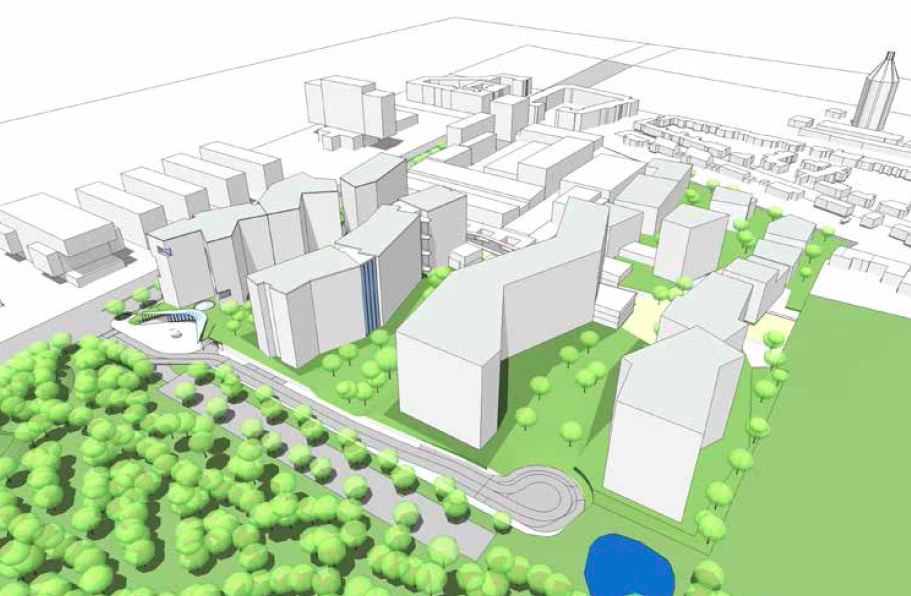
Three of the large buildings are 12 storeys high, corresponding to the limit of the buildings not being high rised. The other buildings are lower, in transition with the adjacent buildings. 2/3 of the units are social housing, 1/3 are home-ownership. There are no cars allowed, 990 parking spaces are located beneath the tall buildings. The outdoor space is ‘care free’.
The area is directly adjecent to a park on on side and to the Vienna Woods at an other side. I’ll explain later why this is so important to me.
The planning process had two special features:
The first was a micro-climatic simulation of the effects of wind direction and vegetation on the climate, and also calculated the costs of the chosen greenery on the investment costs and on the maintenance costs. RESULTS : about 2 degrees cooler, PET up to 20 degrees cooler. Investment costs were no higher than normal. Maintenance costs €2 more/m2/year – that’s €160 per year for an 80m2 apartment.
The second special feature was good luck: – after the development plan was completed and accepted by all investors, architects and the city, we received funding from an interdisciplinary scientific team of experts, who accompanied the entire realization process in detail. RESULT: a manual how to plan and build a Biotope City.
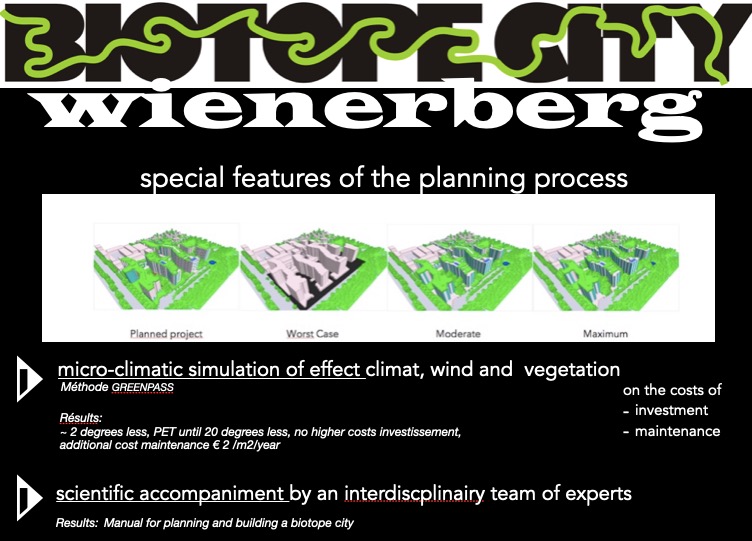
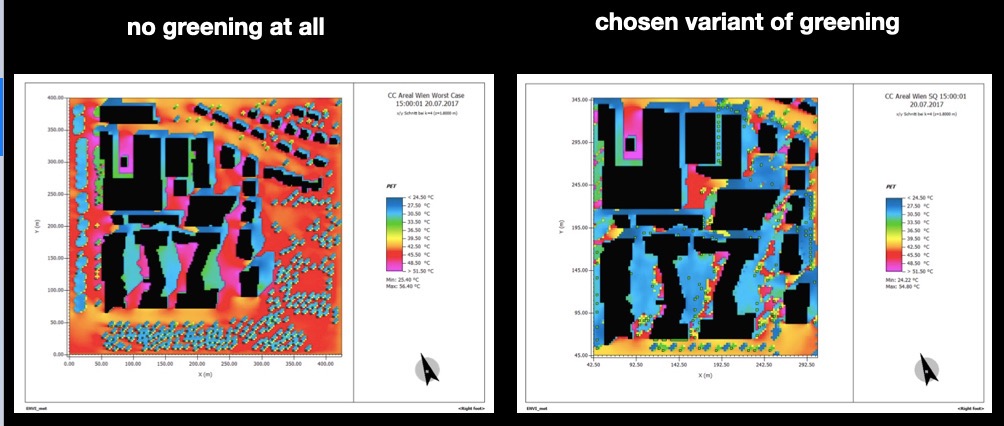
Let’s take a stroll through the neighborhood. Nota bene: Although this is a densely built-up area, the outdoor space also leaves plenty of room for meadows with small-flowered plants, good for insects.




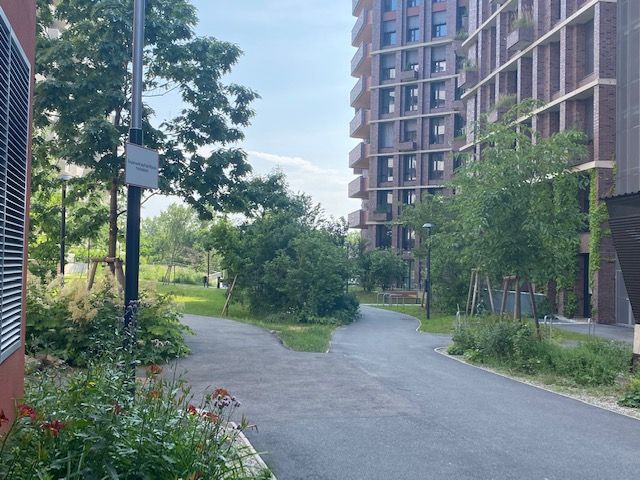
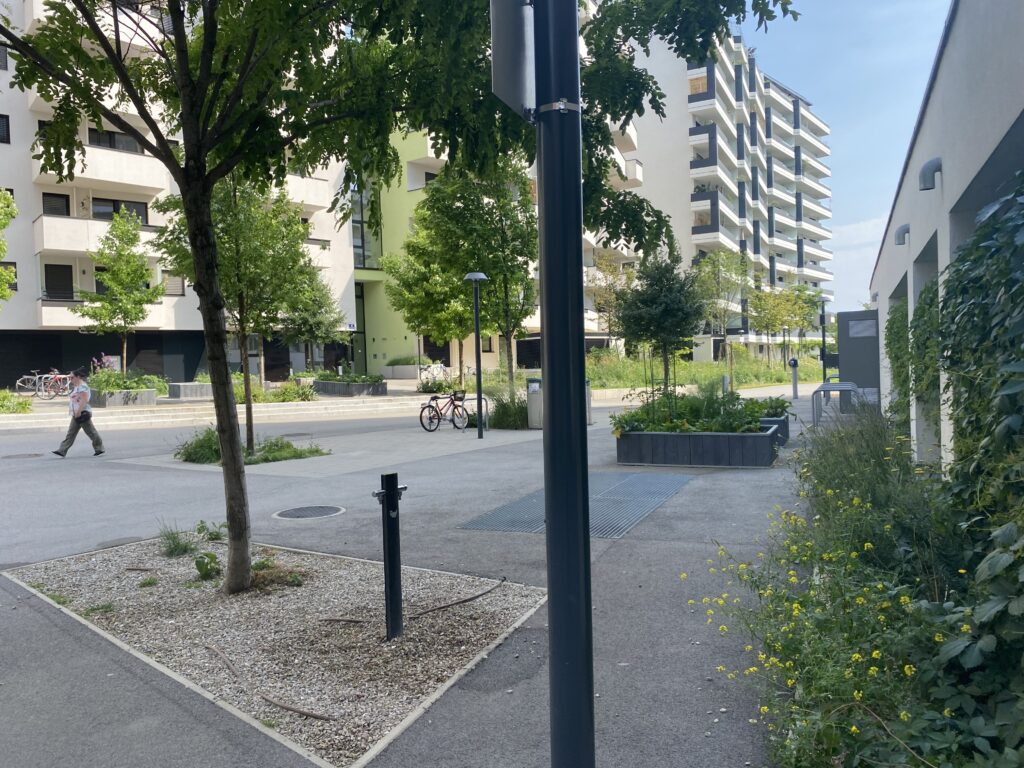

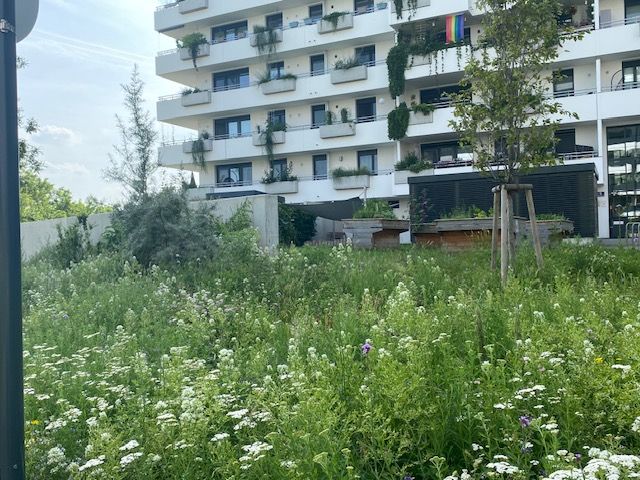
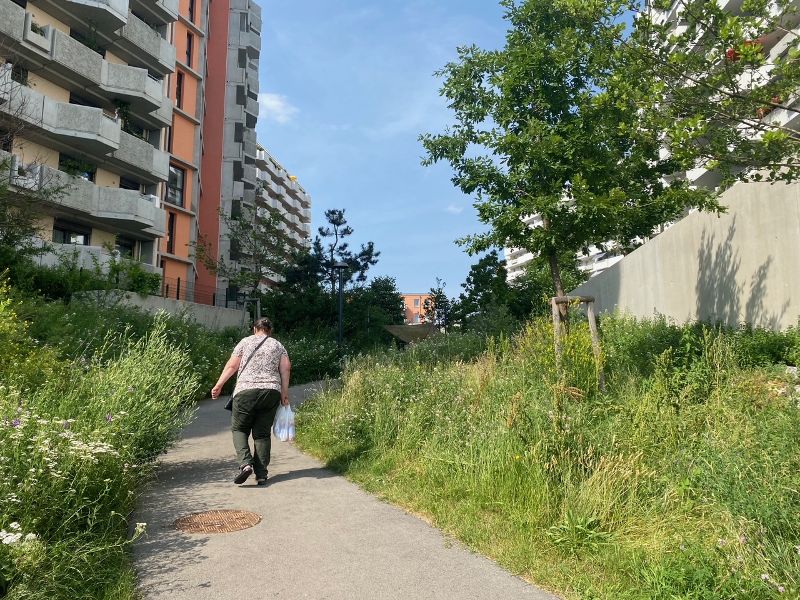
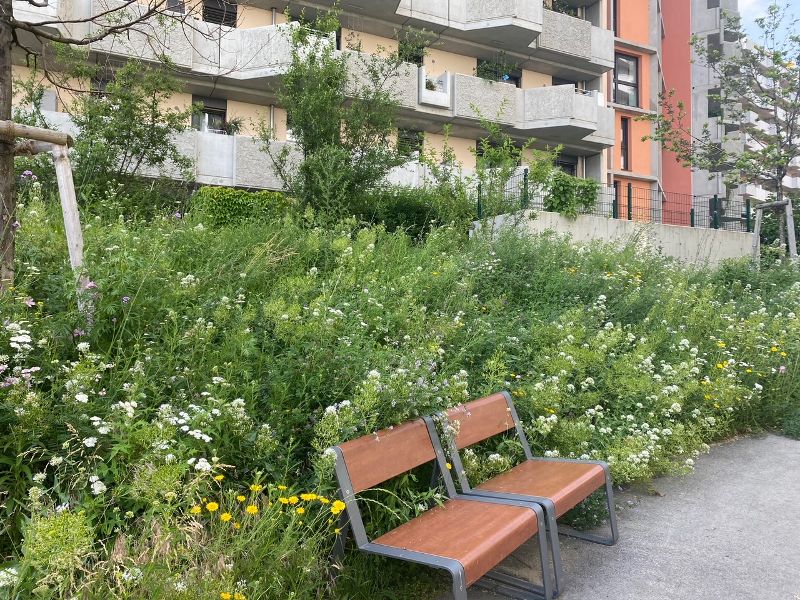

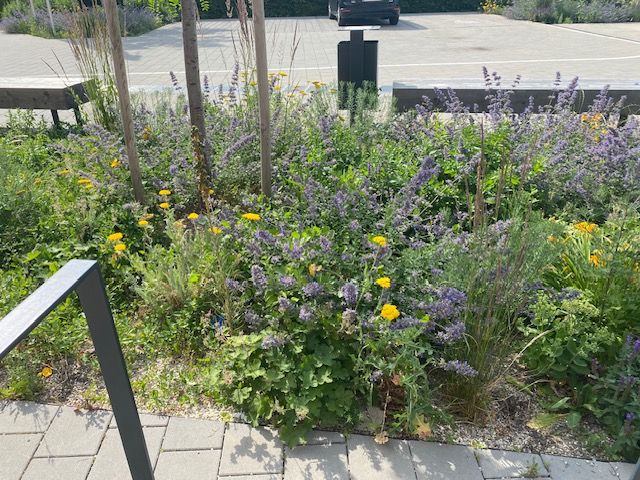


Façade planting was an important element of the concept. This contributes effectively to reducing summer temperatures, especially at night, and is also good in winter against wind chill along the facades, as it acts as a wind brake. However, in Vienna, there are strict fire protection regulations for vegetated facades. That’s why we had to take fire protection measures after two storeys. In the meantime, the fire protection regulations have been amended, i.e. they are less strict. The BC Wienerberg project and our negotiations with the city led to fire tests which brought about these improvements.
As you can see, the façades and balconies are also well planted, thanks to the use of balconies. The housing company to which this building belongs invested the small additional costs in an automatic watering system. It also pre-planted half the balconies with insect-friendly plants. Residents were able to plant the other half themselves. The result is very convincing.
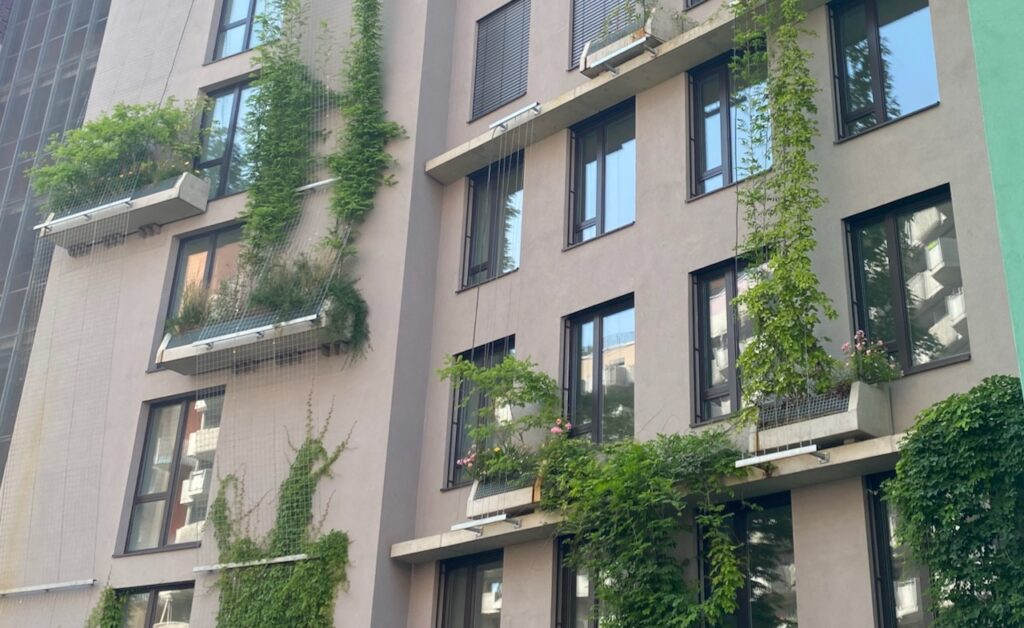
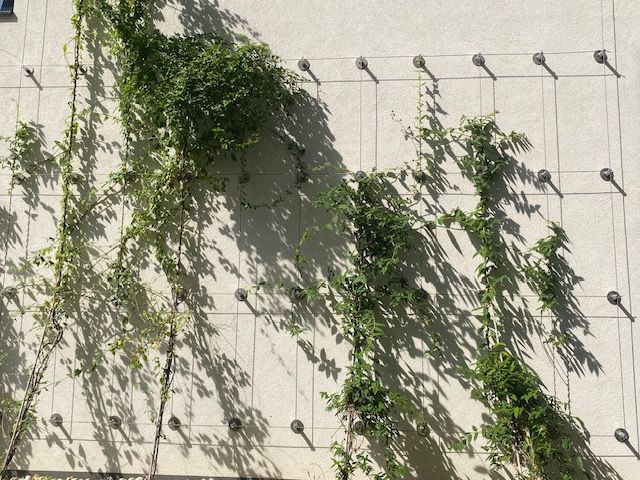
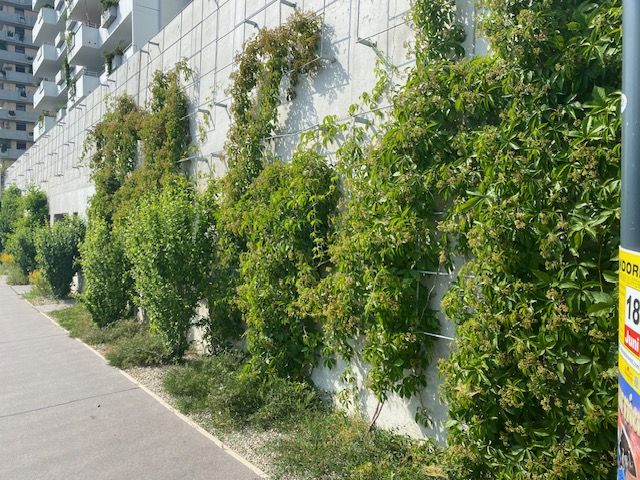

Trees are essential. We have planted 289 different varieties of large trees up to 30 m tall, representing a forest of almost 2 hectares. Among them are fruit trees that already bore fruit in the first year after planting.

Apropos cohabitation: Sharing space between insects in animals with meadow and men, children in young and recreating with grass – it’s a success!
A few weeks ago, I made a brief assessment of the experiments being carried out in the neighborhood and interviewed the manager of the company that maintains the entire outdoor space. He told me: “The residents are attentive, we hardly throw any garbage – but there are people, families who come here, who don’t live here, but who spend their free time with their children here. And they’re not careful, they don’t throw their paper cups in the garbage cans. I have to have them collected.
I was delighted to hear that! These people spend their free time in this densely populated area, not in nearby Benesch Park.
Biotope City – the concept works!

Urban gardening’ also works very well, organized by the residents themselves. There’s a waiting list, we haven’t planned enough.
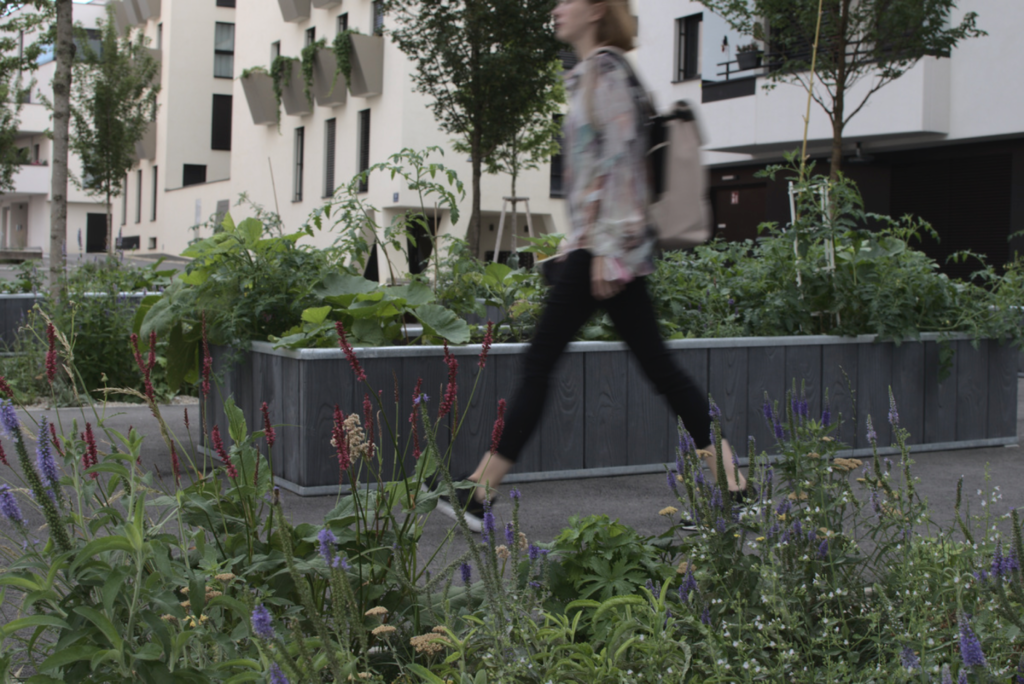
Photo © Heinz Wind
Passons maintenant aux toits verts. Ici aussi, beaucoup d’attention est accordée à la plantation de petites fleurs qui offrent de la nourriture aux insectes tout en dégageant un caractère récréatif.Le débat sur les économies d’énergie fossile a conduit à un engouement pour le photovoltaïque en Autriche et en Allemagne. Cela s’est transformé en une menace pour les toitures végétalisées. Les constructions que nous avons choisies pour ces toits montrent que cela se combine bien. Efficace pour l’énergie et les plantes en même temps, qui sont protégées d’un soleil trop fort. À suivre !
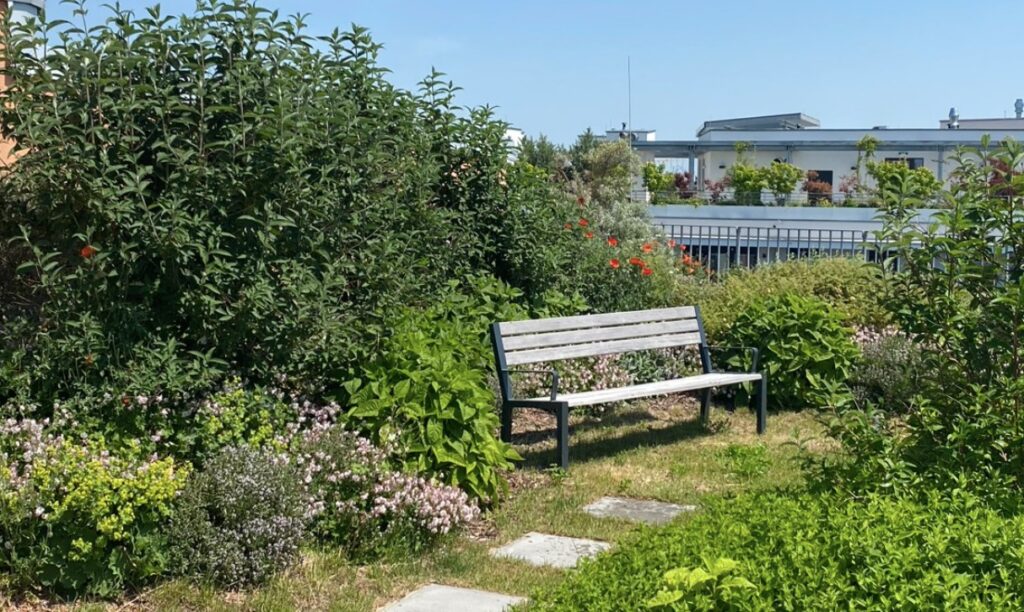
Photo© Barbara Wirsteiner

Photos © Helga Fassbinder

Once again, a few essential points:
– retain rainwater completely
– choosing insect-friendly plants
– automatic watering of balcony flower boxes
– integrating habitats for birds and bats into the construction of buildings
– and above all, a car-free neighborhood
We have produced a brochure for new residents, explaining the Biotope City concept and giving advice on planting balcony containers, choosing plants and maintaining greenery.
For specialists, the scientific team has produced an 80-page guide to the construction of such neighborhoods. Unfortunately, only in German. But there’s also a shorter version in english, entitled “Hidden Treasures” – both on the BIOTOPE CITY JOURNAL website for download.
About cohabitation:
It’s important to understand that this strategy brings together two totally opposed worlds: an inorganic world, which is or must be fixed and immutable: as soon as a building was completed, it was just a matter of maintaining it in terms of wear and tear. And an organic world, constantly living and changing. This calls for a different way of thinking about construction and a different way of thinking about maintenance. The inorganic world we’ve built needs to be constantly accompanied, at the same time as the organic world.

Photo © Helga Fassbinder
Of course, these strategies can also be applied to the existing city.
Greening public spaces, even the smallest ones. Here’s an example: you’re probably familiar with the Pavillon d’Arsenal in Paris. The space in front used to be a very small sandlot. It’s now a very small park! Much loved by local residents.

Let’s set new rules for citizens:
- front garden approval
- animation / help / subsidy
- greening of facades
Memento for existing cities too:
- do everything for insects
- do everything for greening
- ban on waterproofing gardens
- approval/encouragement of gardens at the foot of trees
- tolerate weeds, or better still: wild herbs wherever possible
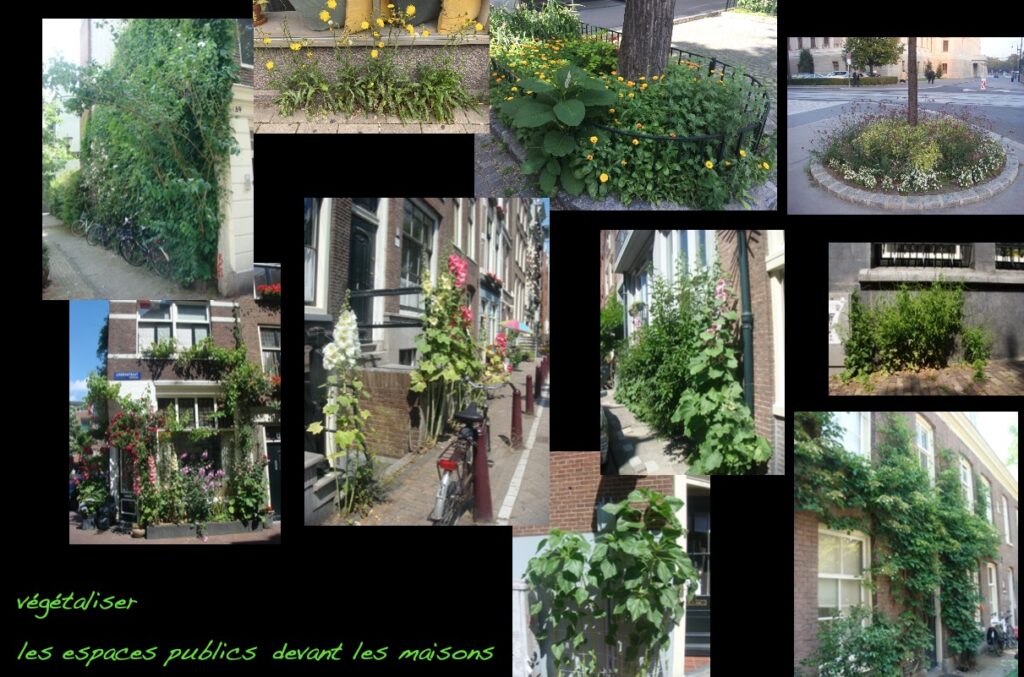
Photos © Helga Fassbinder
Here, the beautiful consequences of allowing it to citizens – some examples of “allowing autonomous citizen activities“…and “allowing ‘weeds’“
Let’s embrace nature’s new urban beauty of ‘chaos’…
Memento! Also in existing cities: do everything for insects, do everything for useful vegetation for them. Cohabitation with birds: birds are very inventive, finding nests almost everywhere. It’s also a question of allowing our winged roommates to carry out independent activities.
Other species need hollows, which are harder to find. Nest-building is also a great activity for youngsters – it helps them learn social skills.
Really, I’ve proved that our existing cities have already long been biotopes, if they’re designed and built sensibly: Outside my windows in the center of Amsterdam I’ve already seen 32 different species of birds – I’ve underlined them.
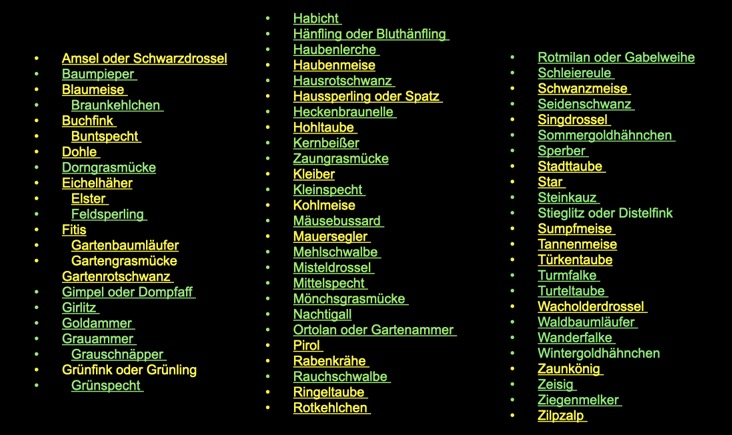
One morning, I open my front door – here you see who was standing in front of me. A kind passer-by took the photo:

My Summary:
The building blocks of the new are present, new techniques are being developed, but the usual procedures and official solutions, especially regulations, often work differently – I’d say: still differently! Let’s change them!

